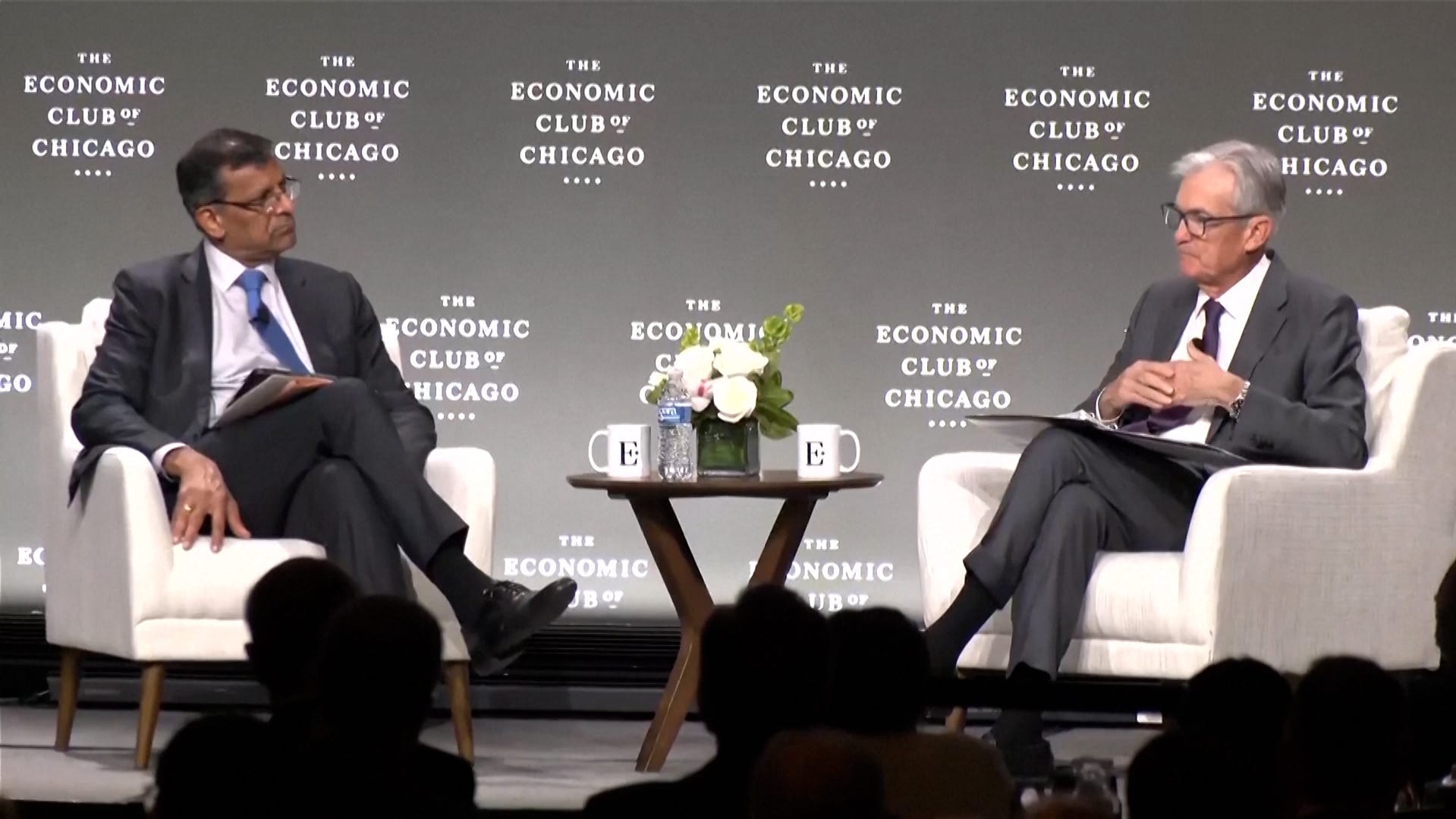
Powell: Fed needs clarity on tariffs, policy changes
Federal Reserve chair Jerome Powell says that they need “greater clarity” on tariffs before deciding to cut interest rates.
Tariffs – and uncertainty surrounding them and how prices will be affected – could spell the end of the “resilient consumer,” as Americans are stressing more over rising costs and increasingly have a “wait and see” stance about spending, a new survey reports.
The study, by the Kearney Consumer Institute, found that consumers are wary of spending.
“What we’re seeing, despite broad uncertainty, is a relatively steady level of stress, year over year, in North America,” Katie Thomas, who leads the institute, an internal think tank at the global strategy and management consulting firm, said in a press release. “Even as consumers move from optimizing to sacrificing, they’re maintaining a ‘wait-and-see’ stance about spending.”
The sentiment is very similar to feelings during the pandemic, said Thomas.
The institute conducts a Consumer Stress Index quarterly. The survey provides insights into how consumers are feeling through questions it asks 2,000 U.S. consumers in a variety of income and demographic sectors.
Consumers are moving from optimizing to sacrificing
Comparing year over year data from previous index surveys, shoppers are showing wariness, said Thomas in the press release.
“Given the consumer’s feeling of total uncertainty about what’s going to happen day-to-day, there’s a lingering unease similar to 2020–2021,” she said, referring to the years of the COVID-19 pandemic. “Whether it’s defensive stocking up on eggs or wondering whether to buy that new iPhone, across the country and all sectors, we’re seeing a huge expression of confusion and frustration.”
People are questioning if and what they should buy, Thomas said.
“Tariffs could be the end of true resilience of the consumer—all their savvy, thoughtfulness, and optionality is no longer feasible in the face of making bigger cuts to their spend,” she said.
Tariffs are concerning consumers
Trade issues are a significant and growing concern for consumers, the Kearney survey said. In the poll completed in the third quarter of 2024, 36% of consumers were concerned about trade disputes affecting them personally. By the first quarter of 2025, the most recent survey, that number had surged to 54%. The survey was completed before the April tariffs were announced, said Thomas.
Consumers have been optimizing their spending for years, Thomas said, by making smart decisions to have the ability to still spend, particularly on discretionary items.
“Tariff price increases could mean consumers hit a breaking point, and more will have to start eliminating products or categories altogether,” she said.
Consumers will always be stressed about something, however, Thomas said, and other areas of spending could benefit as consumers make different choices.
“Right now, they’re less stressed about the quality and sustainability of their food than they were at this time last year.,” she said. “Even as they tighten their wallets, there will still be consumers who make stress purchases or go in for retail therapy. This may be good news for resale platforms such as thrift stores and used car marketplaces, which allow consumers to spend less without sacrificing quality.”
Second report also says consumers are stressed
An unrelated index to the Kearney survey is also showing some consumers are taking a defensive mode to their spending.
U.S. middle-income consumers are adopting a defensive posture, according to the April Consumer Health Index from Bain & company/Dynata, partly due to worries about the fate of the housing market. The outlook gauge of a middle-income group of consumers surveyed fell slightly, by 0.2 points, to a long-term neutral level, “in part reflecting the perceptions of financial health for the group are much more geared to the housing market and the price of houses which typically form their main assets, rather than by equity markets,” the company said in a press release.
The report also notes that saving intentions for middle-income Americans jumped by 2.4 points in April while their intent to use debt fell 2.5 points.
“Middle-income earners are clearly adopting a defensive crouch,” said Brian Stobie, senior director in Bain & Company’s Macro Trends Group. “They are increasingly saving and scaling back intentions to use debt to levels below the long-term norms.”
Lower-income consumers showed the fewest signs of concern, the Bain/Dynata analysis found. The April outlook readings for the demographic continued a six-month uptrend, reflecting continued relative strength in the jobs market. But the report cautioned that the positive results could change if current economic volatility leads to a deterioration of the jobs market.
The index also showed the outlook scores for upper-income American consumers plunged by 11.8 points to 88.6. That was the sharpest drop except for that seen at the onset of the COVID-19 pandemic. The drop reflects the impact of the recent stock market upheavals on the demographic’s investment portfolios, which make up the large portion of the group’s overall wealth, the analysis found.
“With upper-income U.S. consumers representing more than half of discretionary consumer spending, the CHI report warns that if the equity market disruptions and the negative outlook for well-off Americans persist, their spending intentions would very likely be hit, dealing a significant blow to growth prospects for the U.S. economy,” the company said.
Report data also showed upper-income consumers spending intentions rose significantly by 2.1 points, but the analysis concluded that was because shoppers were spending to “front-run” potential tariff impacts by making purchases early, before prices go up.
Betty Lin-Fisher is a consumer reporter for USA TODAY. Reach her at blinfisher@USATODAY.com or follow her on X, Facebook or Instagram @blinfisher and @blinfisher.bsky.social on Bluesky. Sign up for our free The Daily Money newsletter, which will include consumer news on Fridays, here.
